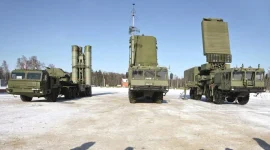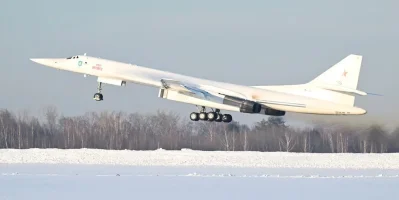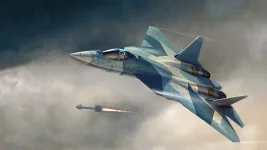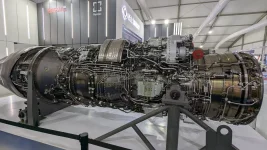- Views: 3K
- Replies: 24

Russia has made a significant offer to India at Aero India 2025, proposing the sale of its advanced R-37M long-range air-to-air missiles, known as RVV-BD in its export version. This proposal includes the possibility of local production in India, potentially boosting the nation's air combat capabilities considerably.
The R-37M missile has a remarkable maximum interception range of 200 kilometers (approximately 124 miles), placing it in a select group of missiles worldwide capable of engaging targets beyond 100 miles. This capability underscores Russia's position as a leader in advanced air-to-air missile technology.
The missile utilizes a sophisticated guidance system that combines inertial control, radio correction, and active radar homing. This ensures pinpoint accuracy, even in challenging environments. This "fire and forget" capability allows the missile to independently lock onto and pursue its target after launch.
With a launch weight of around 510 kg and a 60 kg high-explosive fragmentation warhead, the R-37M is a formidable weapon. Measuring approximately 4.06 meters in length, it can engage targets at altitudes ranging from 15 meters up to 25 kilometers, providing operational flexibility in various combat situations.
This missile could significantly enhance the Indian Air Force's (IAF) long-range engagement capabilities, especially for its Su-30MKI fleet currently equipped with R-77 missiles. While effective, the R-77's range falls short of the R-37M, making the latter a potential game-changer for long-range aerial combat.
The R-37M's ability to engage high-value targets such as AWACS, tankers, and other C4ISTAR platforms from a safe distance could significantly bolster India's air defence strategy. By deterring threats more effectively, it would provide strategic depth and enhance the survivability of IAF operations.
Currently, the IAF's Su-30MKIs utilize R-77 missiles (also known as RVV-AE or RVV-MD2 in their latest version), which have a considerably shorter range than the R-37M. This proposed upgrade would not only expand the IAF's engagement envelope but also increase the effectiveness and survivability of its operations.
This potential acquisition aligns with India's ongoing efforts to modernize its armed forces and enhance its defence capabilities in the face of evolving regional security challenges.




